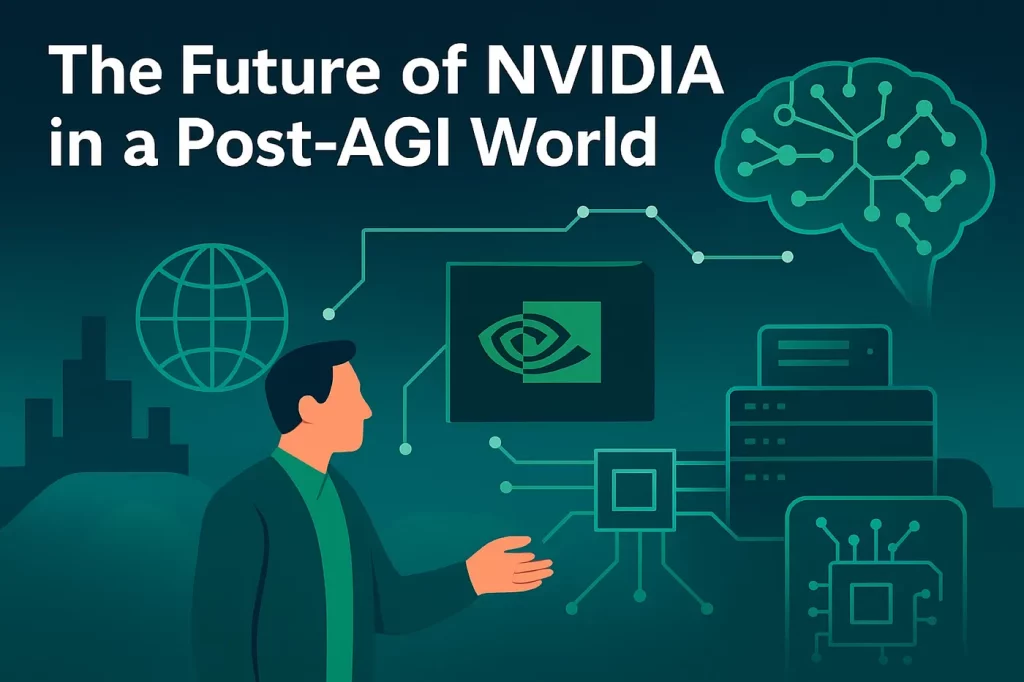In recent months, numerous analysts and media outlets have sparked discussions about a potential “bubble” surrounding artificial intelligence (AI) companies. At first glance, the valuations of leading players such as Nvidia, Microsoft, Amazon, Google, or even emerging startups may appear sky-high. However, a deeper, nuanced analysis demonstrates that the current situation is fundamentally different from previous tech bubbles, such as the dot-com era, and that the growth of AI companies is grounded in real, measurable fundamentals.

1. Solid Fundamentals and Genuine Profitability
Unlike the dot-com bubble of the early 2000s, where many companies lacked profits entirely and relied solely on promises and projections, today’s leading AI companies are the most financially robust Big Tech firms in the world. These companies not only generate substantial revenue but also maintain high profit margins, demonstrating their ability to convert innovation into tangible financial performance.
For instance, Nvidia has tripled its revenues in under two years and maintains profit margins above 70%. Microsoft, Amazon, and Google integrate AI into widely-used products and services, generating immediate and recurring cash flows. This distinguishes these companies from speculative startups, as their valuations are underpinned by real, measurable earnings, not mere future expectations.
A key driver of these profits is enhanced productivity. AI technology enables automation of complex tasks, optimization of internal processes, and efficiency improvements across multiple operational areas including design, logistics, marketing, software development, and data analytics. Higher productivity translates directly into higher revenue and profit growth, because AI, once implemented, is highly scalable and maintains high margins. Each incremental unit of productivity generated by AI has a measurable impact on the company’s bottom line, creating a sustainable financial foundation.
2. Capex Funded with Free Cash Flow and the Multiplier Effect
Spending on AI infrastructure—including data centers, chips, high-performance computing, networking, and energy systems—has reached unprecedented levels. Crucially, this capital expenditure is funded by the free cash flow already generated by these companies themselves, without relying on debt or equity dilution. Many even continue to repurchase their own shares while investing heavily in AI, which demonstrates not only financial strength but confidence in long-term growth.
These investments create a positive multiplier effect throughout the supply chain. Leading component providers such as Nvidia, AMD, Intel, TSMC, and ASML supply critical chips and systems for data centers and AI platforms. As demand for these centers grows, these suppliers also see increased revenue, further reinforcing the ecosystem.
Moreover, this capex doesn’t just expand internal capacity—it enhances overall productivity, enabling the development of new products and services, streamlining operations, and creating substantial future profit potential. The technology investments are optimal in efficiency, meaning once implemented, they provide high returns and scalable profit margins. This dynamic helps explain why these companies’ valuations are justified, grounded in future earnings potential driven by real productivity gains rather than speculative hype.
3. Widespread and Accelerating Adoption
The adoption of AI is far from theoretical or a passing trend. Companies across multiple industries—finance, healthcare, logistics, manufacturing, technology, marketing, and customer service—are leveraging AI to automate complex workflows, improve decision-making, and enhance service delivery. The pace of adoption has exceeded market expectations, fueling the growth seen in leading AI companies.
By improving efficiency and productivity across critical processes, AI adoption increases revenue streams while simultaneously lowering operational costs. For example, generative AI allows marketing teams to automate content creation, data scientists to accelerate analysis, and software engineers to optimize coding workflows. These improvements translate directly into enhanced financial performance, reinforcing that AI’s impact is not just strategic but measurable in profitability metrics.
4. Favorable Policies and Global Megatrends
AI growth is further supported by broader global megatrends: accelerated digitalization, industrial automation, aging populations, the push for energy and operational efficiency, and government policies fostering technological innovation. From tax incentives and research grants to infrastructure support, public and private initiatives collectively reduce adoption risks and accelerate scaling.
The convergence of these trends ensures that AI is not a speculative fad but a strategic technological shift. Companies investing now are positioned to capitalize on these long-term trends, securing sustainable growth and creating barriers for competitors that fail to adapt.
5. Market Corrections, Yes; Bubble, No
While some individual stocks—particularly smaller or less established AI startups—may experience market corrections, this does not signify a systemic bubble. Leading AI companies’ growth is underpinned by solid fundamentals: proven revenues, robust free cash flow, strategic capex, and real adoption.
That said, caution is warranted for AI startups that are not yet profitable and whose valuations rely solely on future promises. These companies may carry bubble-like risks and investors should exercise prudence.
6. The Productivity-Profit Link: Why AI Increases Earnings
A key reason AI investments are expected to increase profits lies in productivity gains. By automating complex processes and optimizing resource utilization, AI increases the output per unit of input. Higher productivity means that companies can generate more revenue without a proportional increase in costs. Given the highly scalable nature of AI technology and its ability to operate with minimal marginal cost once deployed, these productivity gains directly translate into higher margins and greater profitability over time.
In addition, AI allows companies to unlock entirely new revenue streams, innovate services, and enhance decision-making speed and accuracy. As these capabilities expand, companies can sustainably grow revenues and profits, further differentiating today’s AI investment landscape from past speculative bubbles.
Conclusion: Discussions about a bubble in AI overlook the fundamental realities of the market. AI is not a short-lived trend; it represents a transformative technological infrastructure that will reshape economies over the coming decades. Investments in AI are supported by solid financial fundamentals, proven productivity gains, strategic capex investments, broad adoption, and global megatrends, clearly distinguishing them from past technological bubbles.


